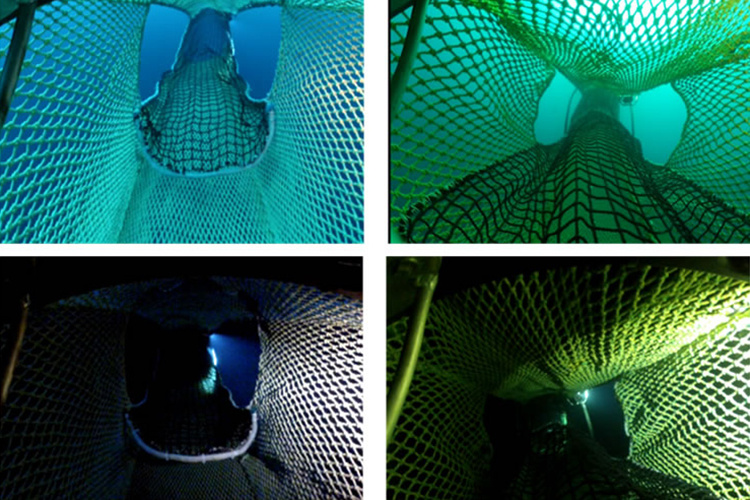LED lights can help reduce bycatch by aiding the escape of king salmon from Pacific hake trawl nets, according to a study done by researchers at the Pacific States Marine Fisheries Commission and the Northwest Fisheries Science Center.
The lights influence where salmon exit bycatch-reducing windows in the hake nets, and could increase the total number of salmon that escape, the researchers say. In a series of tests in 2015, the lights seemed to attract the king salmon. During the tests, 86 percent of the salmon that escaped used the openings framed by LED lights.
LED lights are cheap and widely used in residential and industrial settings. Though the lights on the test nets were fairly similar to those in any hardware store, they were manufactured specifically to withstand harsh ocean conditions by a company in Florida that makes longline fishing gear.
“It’s easy to use, relatively cheap, and widely available,” Mark Lomeli, a researcher at the Pacific States Marine Commission, said in an interview posted on the NOAA website. “You can easily clip the lights to the webbing of the net around the escape openings.”
The $58.6 million Pacific hake fishery is the largest groundfish fishery by volume on the U.S. West Coast and runs from northern California to northern Washington.
Bycatch of king salmon, which is on the endangered species list, is usually quite low: 0.03 salmon per metric ton of hake. But if bycatch exceeds 0.05 salmon per metric ton of hake, or is expected to exceed 11,000 fish, limits to hake fishing are imposed. In 2014, that limit was reached.
Researchers first realized king salmon might prefer well-lit escape windows when using an underwater camera mounted with an LED light to film fish in a newly designed, bycatch-reducing net. The salmon seemed attracted the camera light.
“Our data and video observations indicate that at deeper, darker depths where trawl nets go, light from the LEDs are enhancing the salmon’s ability to perceive the escape areas and the areas outside the nets,” Lomeli said.
Since hake aren’t nearly as strong of swimmers as king salmon, they aren’t able to escape through the windows, Lomeli added.
The lights have also worked to reduce bycatch of a species of Pacific smelt, juvenile rockfishes and flatfishes in the ocean shrimp trawl fishery off Oregon. They might work to reduce king salmon bycatch in the walleye pollock midwater trawl fishery in Alaska, Lomeli said.
“We think these LEDs are low-hanging fruit for contributing to the recovery of this species, and can also play an important role in the stability of this fishery,” Lomeli said.
The research was funded by NMFS Bycatch Reduction Engineering Program.
This story was originally published by Seafood Source and is republished here with permission.







